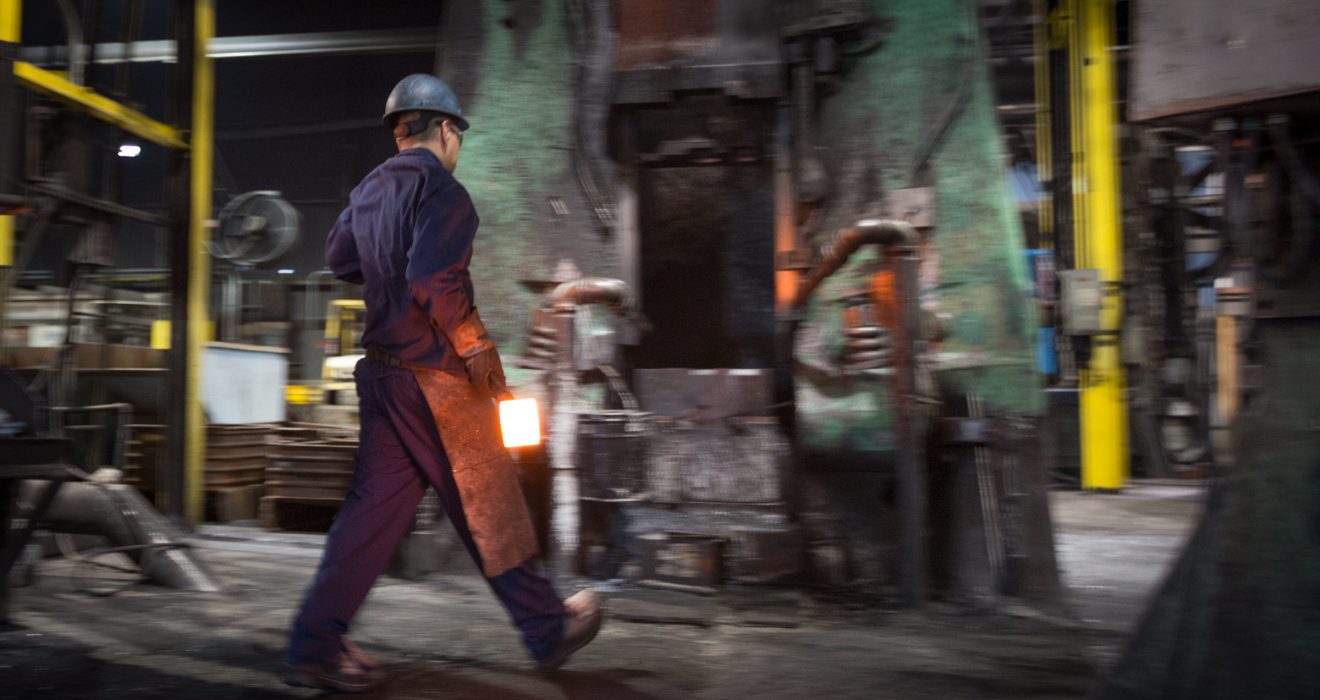Forging is defined as a manufacturing process involving the shaping or forming of metals using localized compressive techniques such as hammering, pressing, or rolling. Various forging techniques are implemented by industry professionals highly depending on the material and the product that is being forged. The different forging techniques have their own advantages and disadvantages.
Forging encompasses four ways that can be employed to forge a part. These are:
a) Open Die Forging
b) Cold Die Forging
c) Impression Die Forging
d) Seamless Rolled Ring Forging
These are explained in detail below.
The Different Types of Forging Ways
1) Open Die Forging
In open die forging, two flat or simply shaped dies are employed to apply pressure or force to the base material from both sides. This process is referred to as open-die because the material that is being forged is not confined by the dies.
2) Cold Die Forging
While most forging is done with the use of heat, in cold die forging, the process is carried out in colder temperatures. Some forging examples using colder temperatures include bending, cold drawing, coinage, etc. This forging technique is implemented in order to yield more diverse part shapes.
3) Impression Die Forging
Impression Die Forging, also referred to as closed die forging, basically involves the use of dies to shape the materials. It is similar to open-die forging, but the difference lies in the fact that it completely encloses the material that is to be forged.
4) Seamless Rolled Ring Forging
Seamless Rolled Ring Forging, like the other forging techniques, utilizes dies and pressure to shape the materials into the desired shape. But rather than using flat dies, it makes use of curved dies (typically two opposite curved dies) to shape ring-type components.
When it comes to the inspection of forging parts, the first thing you must know is if the inspection body is well acquainted with the industry and is accredited. This will make it easier for the client to have their inspection done at ease.
The inspection is carried out by first making sure that all the documents and records are verified. Next, the inspector must be aware of the various methods of forging inspection that exists. Some of the methods include Chemical Analysis, Visual Inspection, Dimensional Inspections, Material Inspection, etc. among many others.
Forging is greatly opted for because no other metal working process can ensure superior reliability and strength as compared to the forged parts. Forged parts can also work in varying temperatures. Therefore, forged parts are mostly used in industries where human safety is of topmost priority.
Moreover, the material which is used in forging is found to be cheaper as compared to the others which are used in various metal working processes. The whole process of forging can be implemented on any type of metal. Industries can also reduce the usage of expensive alloys with strong forged parts in order to achieve very strong components.
And lastly, forging mostly prevents unexpected failure of any components either due to temperature variance or stress. This is because machine forging has superior grain flow and reduces the chances of shrinkage and porosity due to non-uniform heating or cooling.
